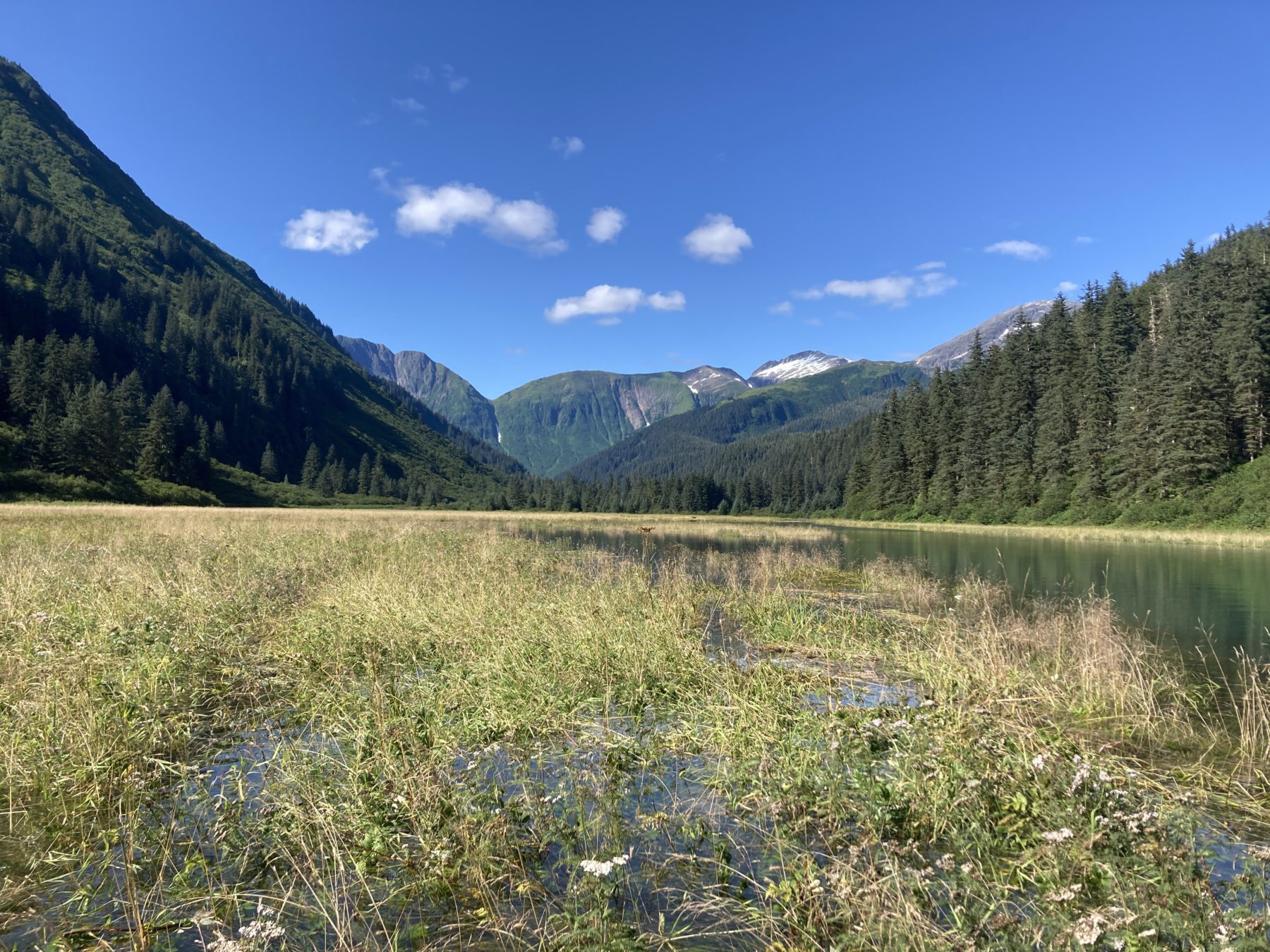
News, Research
News, Research
News, Research
The CHUM Project- An Adventurous Life in a Remote Field Camp
Located 29 miles SE of Juneau, flowing into Mallard Cove in Port Snettisham’s glacial blue waters, Prospect Creek is the third creek surveyed for the CHUM Project. The history of Prospect Creek and Port Snettisham begins with the traditional ownership of the land by the Taku people, with the region home to numerous villages and camps. At the turn of the century, Snettisham hosted an active gold-mining camp, with sporadic mining lasting until the 1930s. Currently, magnetite and iron is mined in the region.
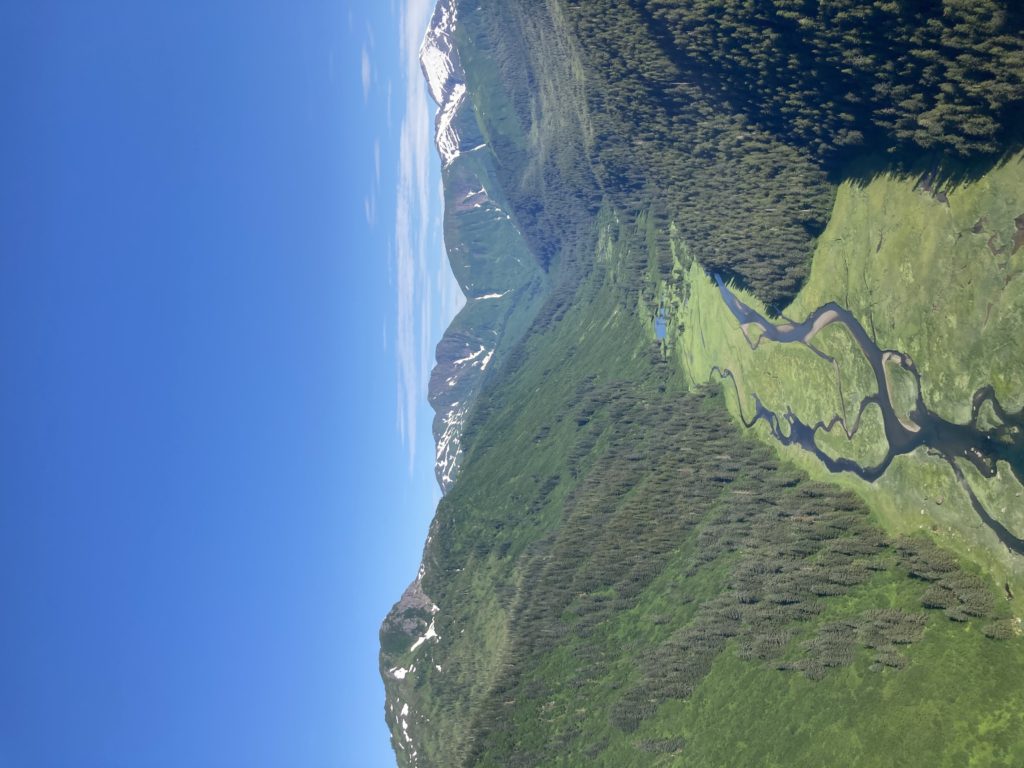
Accessible only by boat or float plane, SSSC developed an impressive field camp to allow easy access of the creek for the CHUM Project crew. The camp was a home away from home, consisting of two tents, one hosting a fully equipped kitchen and gear storage, the other a sleeping tent with a cozy furnace. The camp even had access to hot water, a luxury the SSSC crew greatly appreciated.
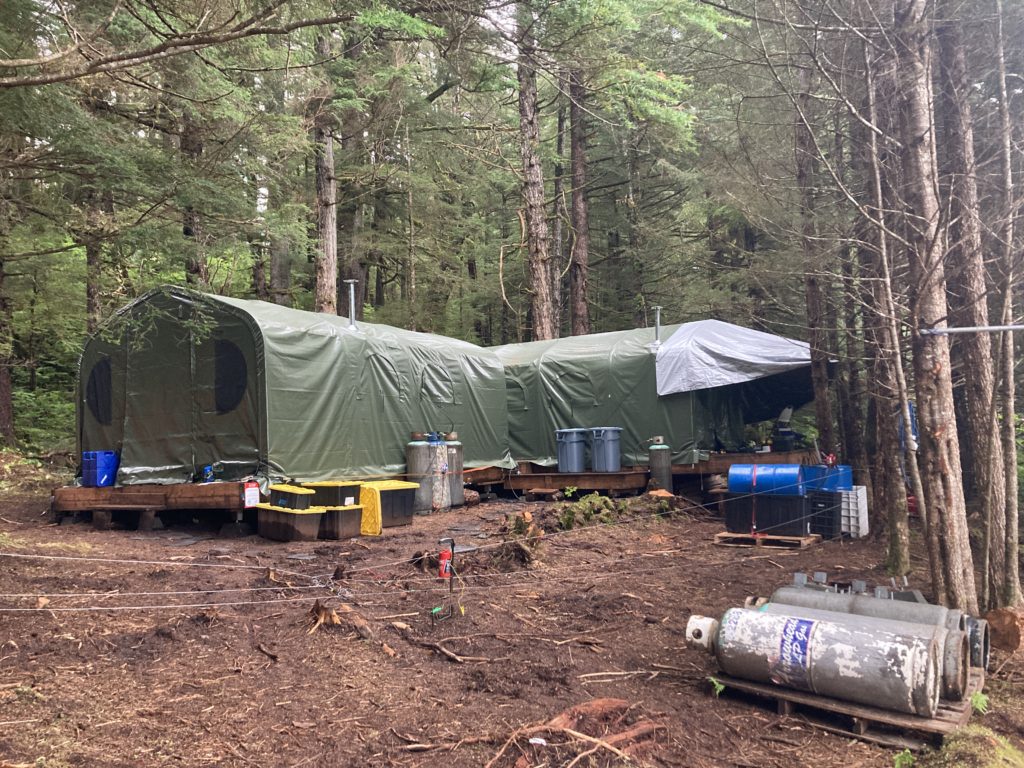
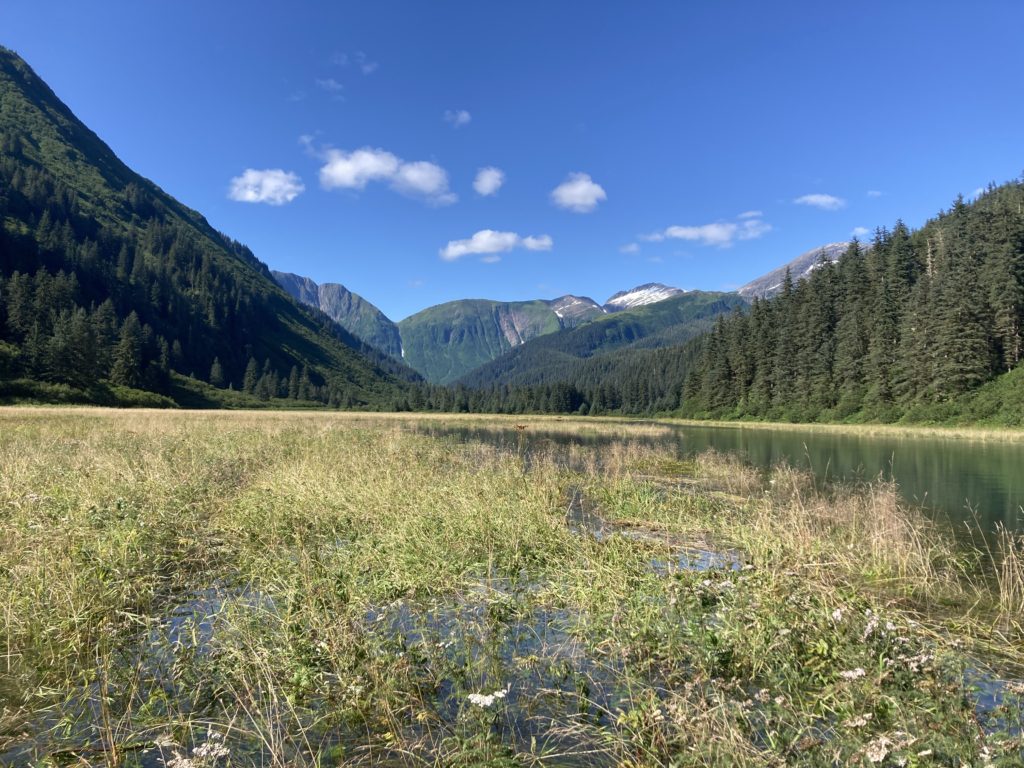
Creating a remote field camp allowed CHUM Project crew quick access to the beautiful, yet rugged Prospect Creek. Crew would commute to their survey stream using SSSC’s trusty zodiac, lovingly referred to as Nancy. Landing in the vast intertidal zone of Prospect Creek, crews hiked over 8 miles a day surveying for chum salmon. Waterfalls cascading off steep valleys surround the creek, lined with thick vegetation, long gravel bars, and beaver dams. Due to the remote nature of the field camp, crews were extra vigilant about field safety, especially regarding bear safety. The region is home to black and brown bears, along with wolves, beaver, and deer.
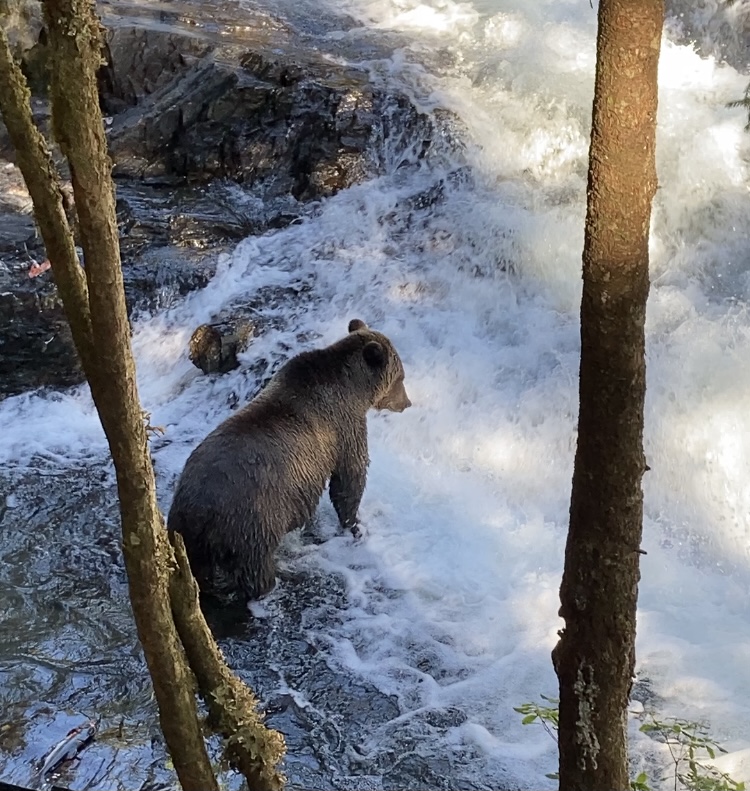
All information was sourced from Bureau of Mines Report of Investigations and Haa Aaní: Our Land Tlingit and Haida Land Rights and Use.